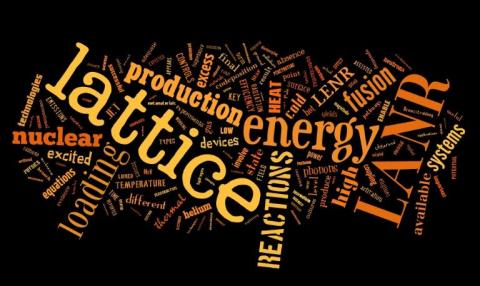The future of sustainable energy likely depends on the invention of Low Energy Nuclear Reactions (LENR), sometimes referred to as "cold fusion." From space exploration, geo-economics, and geo-politics to solving the world's climate and energy problems -- such a device, by itself, could revolutionize the world.
Imagine a world where there is no need for gasoline or power grids, where every family, community or office can generate their own power through a device that could replace water heaters -- operating self-sustainably. Physics could finally be far separated from politics.Through a type of nuclear reaction that occurs near room temperature, LENR could produce energy that is much cleaner, safer, simpler, and cheaper than any other energy source currently known.
The process works essentially by merging hydrogen with nickel, after which a transmutation occurs to form copper and energy such as heat and electricity.
Skeptical scientists have long clumped LENR in the category of pseudo-science, claiming that the currently known laws of physics don't permit such a device to work. Repeatedly failed experiments and a lack of convincing theoretical explication has strengthened those claims, deterring many from dedicating necessary resources to LENR research.
But Dennis Bushnell, chief scientist at NASA's Langley Research Center, acknowledges that LENR has “the demonstrated ability to produce excess amounts of energy, cleanly, without hazardous ionizing radiation, without producing nasty waste.”
Excess energy has been generated and independently verified by 20 different laboratories, making the study of LENR a new and real science.
“We are still far from the theoretical limits of the weak interaction physics for LENR performance and are in fact inventing (in real time) the requisite engineering, along with verifying the physics,” said Bushnell.
Scientists from 19 countries met in July at the University of Missouri to investigate recent developments and discuss the future of LENR.
According to Bushnell, estimates suggest that one percent of the nickel mined on the planet each year could produce the world's energy requirements at 25 percent the cost of coal. NASA claims that carbon could also be used as fuel and would be turned into nitrogen.
Instead of sequestering carbon, it would be totally removed from the system. Widespread use of LENR would be an environmental savior and produce very little waste comparatively.
In what has been described by Bushnell as some of the best LENR work worldwide, Italian inventor Andrea Rossi, backed by physicist Sergio Focardi, recently demonstrated a LENR device called the Energy Catalyzer. It was independently verified by three European universities to have about 10,000 times the energy density and 1,000 times more peak power than gasoline.
According to the study, which lasted 212 hours, by the most conservative figures on energy production, the Energy Catalyzer generates 10 times more energy than any conventional energy source. Further testing is scheduled to start in the summer of 2013.
In this line of paradigm-shifting work, resistance is inevitable, not only through LENR competitors, those working on alternative energy efforts, or through skeptics claiming it's impossible to achieve, but also through well-established industries and “knowledge monopolies” who have trillions to lose through the global dominance of LENR, should they not get involved themselves. Even then, someone owning a functional LENR device patent could easily monopolize the market. It's no surprise that companies such as Shell are scrambling to get involved with LENR development.
If people are able to generate their own energy through a LENR device that costs a few hundred dollars, the need for oil, natural gas and power grids will soon disappear, and power companies could become obsolete.Once worldwide implementation on a large scale occurs, governments could lose revenue from related tax collection, OPEC and its resource extraction would “become a historical footnote,” and the U.S. government stands to lose all foreign dependence on the petrodollar.
On the other hand, through LENR, production costs of plant-manufactured products could drop dramatically and if quickly adapted, the U.S. could offer more competitive product prices along with more competitive wages, which would do wonders for the economy. Energy could be decentralized and produced with minimal government interference, allowing self-sufficiency to take root around the world.
Business owners could drastically reduce overall energy costs, space exploration could be achieved without need to refuel, environmental effects from energy production could be eliminated, and humanitarian aid could be provided much more easily to those in need, making LENR seem almost too good to be true.
